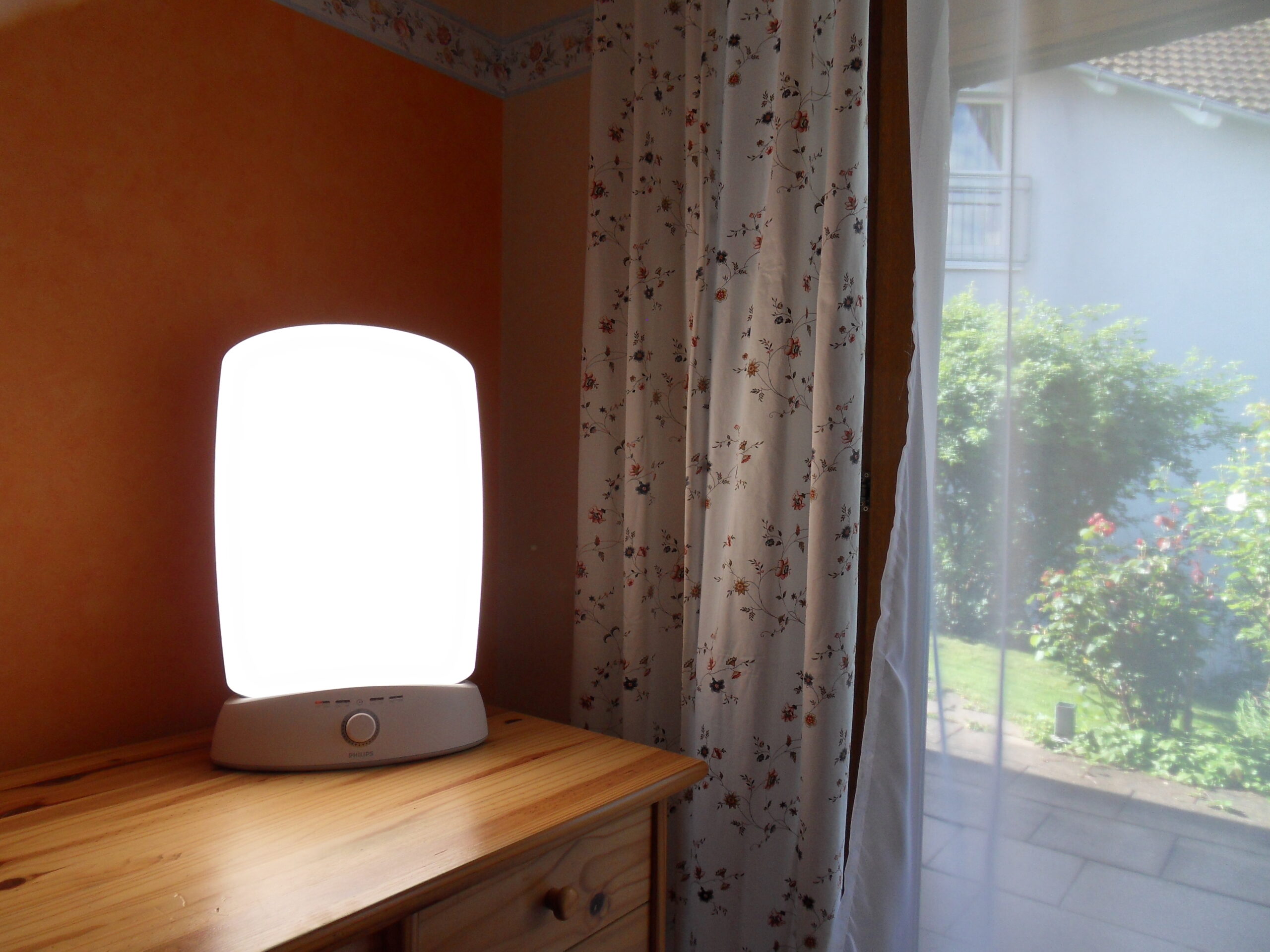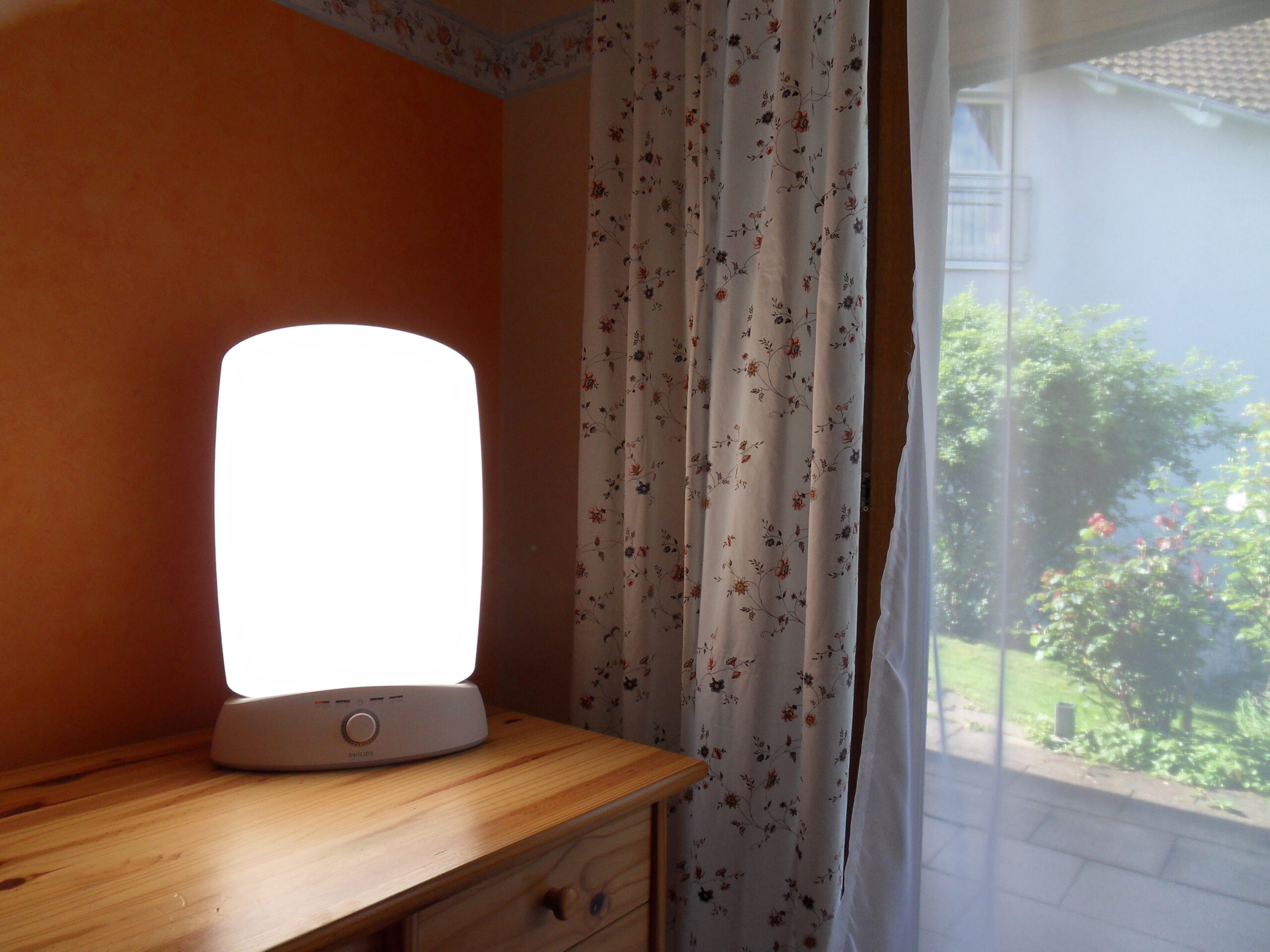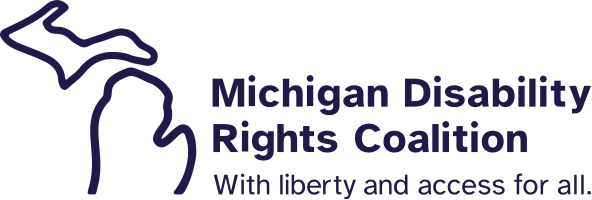The Nights are Longer and SAD is Here
Wednesday, October 18, 2017

By Aimee Sterk, LMSW, MATP Staff
I can feel the change in the seasons and I’m not enjoying it. Shorter days and longer nights start the cycle of Seasonal Affective Disorder (SAD) for me. This time of year I start feeling the energy drain and the pull of my bed increase. According to the Mayo Clinic, the causes of SAD aren’t entirely known but there is felt to be a genetic component and a chemical component the chemical components are related to reduction in sunlight and a corresponding reduction in serotonin and melatonin. Lower serotonin can trigger depression and melatonin helps with sleep.
The risk factors for SAD include living in places like Michigan—the further you live from the equator, the more common SAD is which is likely due to the decreased sunlight during winter.
Luckily for me, there are some treatment options involving assistive technology (AT) and lifestyle changes that really help me:
Light Therapy
 A couple of years ago, when I was complaining about the dark falls and winters in Michigan and my belief that I had SAD, my coworker told me about light boxes. Each morning I start the day with 45 minutes in front of my lightbox. In fact, I’m writing this blog with it on. The bright light mimics outdoor light and appears to cause a change in brain chemicals linked to mood, most likely increasing serotonin. Studies have found that light therapy is effective for SAD and may be effective for nonseasonal depression.
A couple of years ago, when I was complaining about the dark falls and winters in Michigan and my belief that I had SAD, my coworker told me about light boxes. Each morning I start the day with 45 minutes in front of my lightbox. In fact, I’m writing this blog with it on. The bright light mimics outdoor light and appears to cause a change in brain chemicals linked to mood, most likely increasing serotonin. Studies have found that light therapy is effective for SAD and may be effective for nonseasonal depression.
I position myself 12-24 inches from the lightbox and have it off to the side of my computer monitor. I use it in the morning almost every day. My box has bright white full spectrum light and produces 10,000 lumens. In the past, many SAD light therapy boxes were using blue light wavelengths, but recently research has indicated that broad spectrum light is more effective. For the past several years, my lightbox has helped make my SAD much more manageable.
I want people to know about possible side effects of light therapy and contraindications so I’ve copied some warnings below to be very aware of:
Are there any side effects or conditions where light therapy should be avoided?
“Individuals whose skin is especially sensitive to light, such as those with lupus (systemic lupus erythematosus) should consult a physician before attempting light therapy for any condition. You may be advised to avoid light therapy if you have a history of skin cancer or if your eyes are sensitive to light because of conditions such as glaucoma, cataracts, retinal detachment and retinopathy. In addition, light therapy has been reported to lead to mania in some patients with bipolar disorder (manic depression) and to cause suicidal thoughts. For these reasons, patients using light therapy boxes should report any mood changes or disturbing thoughts to their health care practitioners.
Certain drugs can increase sensitivity to sunlight and may cause skin reactions as a result of light therapy. These include antibiotics, anti-inflammatory drugs, some anti-histamines, lithium, the supplement melatonin and the herbal remedy St. John’s wort. If you’re taking any drug or supplement on a regular basis, check to make sure it won’t cause a reaction to light therapy.
Some ophthalmologists have warned that blue light, part of the full spectrum of light used in light therapy, could damage the retina and increase the risk of age-related macular degeneration, a progressive eye disorder that is the leading cause of blindness in people over the age of 55. So far, however, no research has confirmed that risk.
If you’re bothered by the glare from your light box, the blue light is probably responsible. You can screen it out by wearing special eyeglass lenses or clip-ons during treatment. There are also light boxes available that filter out the wavelengths believed to be most harmful.
Other side effects of light therapy are minimal. Some patients report headaches, eyestrain or eye irritation or nausea when they begin treatment, but these effects usually are mild and disappear after a few days.”
Exercising
In this case, my DVD player and online streaming device are AT. My therapist informed me that exercise boosts serotonin and I find it helps me feel better about myself while reducing anxiety and stress. I regularly start my day with an exercise DVD or a streaming program when it’s too cold, dark, wet, or snowy outside to exercise out of doors.
Getting outside
There were brief periods of sunlight this past weekend and I made sure to get outside and hike and work in the yard. The Mayo Clinic suggests that getting outside within two hours of waking in the morning is most effective and that even on cold and cloudy days, getting outside is helpful.
Brightening my home and office
I make sure to open my drapes and have installed solar tubes in darker areas of my home (our hallway). I have painted the walls in our darkest rooms bright, light colors. When I’m up before the sun, I turn on all the lights in the area of the house that I am in.
Taking a vacation someplace warm and sunny

One of my favorite vacations was to Florida. I especially loved paddling the mangroves with my husband in the bright sunshine and warmth in the middle of winter.
I know that I hit my limit of coping with Michigan weather every February so I save up all year to go someplace warm and sunny many years. If only I could find a way to bill that to my health insurance. Funny thing is, the article from the Mayo Clinic even recommends taking a trip as a way to manage SAD, “Take a trip. If possible, take winter vacations in sunny, warm locations if you have winter seasonal affective disorder .”
Do you have SAD as well? What AT or strategies have worked for you?

